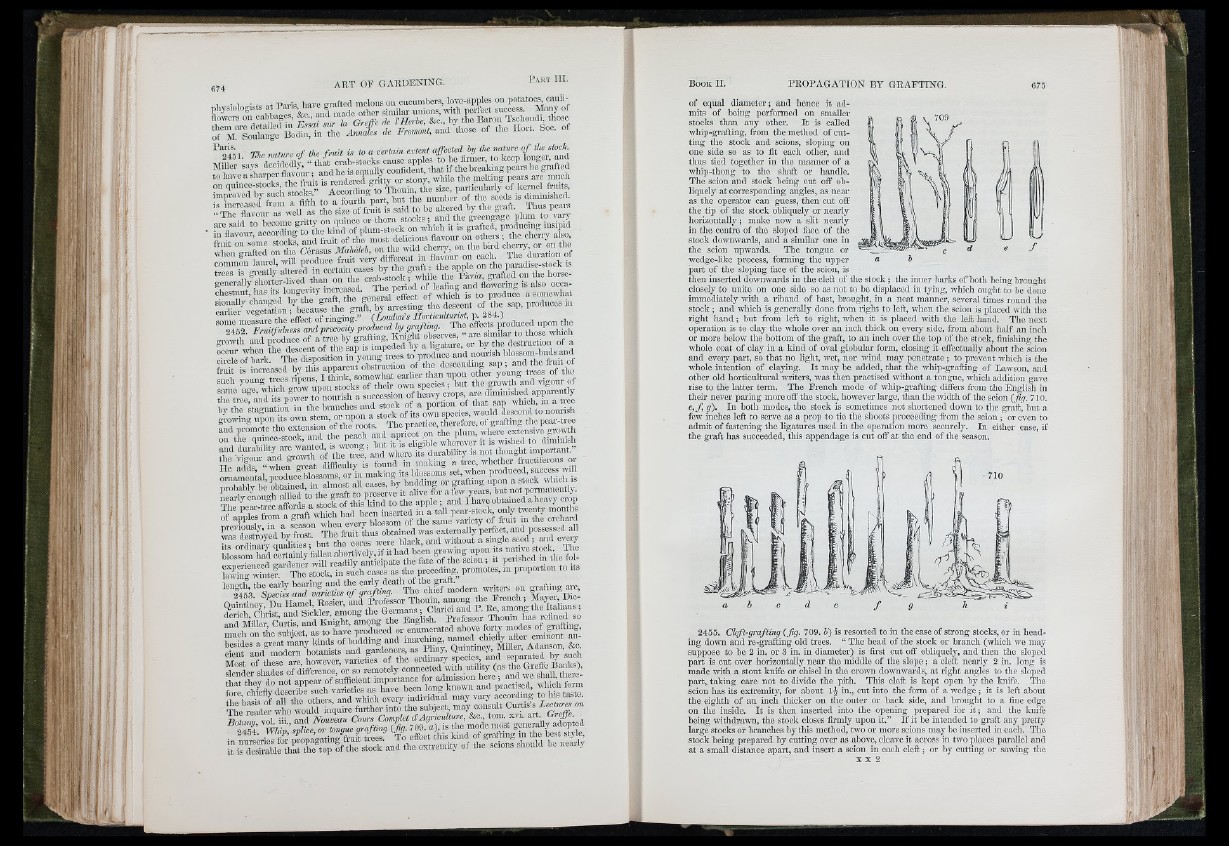
l i
1
'ita
taiij
:
i ' ■
IS' '
W! :
t r é
iré 'E f
tata
1 1'
.■i-
IrI.r'
ì\
l'i ! ‘'':.''i I
• t
I h ? !
>1 • •' I
I t a !
ART OF GARDENING.
= ? l £ i i r é ) 2 i t s i t a r é s
tohaTOashaipei flOTouta ^ 7 p^ars ai'c muto
: « » i t i - u S ^ ‘L " p i s i
— ¿ ¿ l i t « : » » m m m m s
SSM isp » » Ind N ouL u C o - «
of equal diameter ; and hence it admits
of being perfoimed on smaller
stocks than any other. It is called
whip-gi'afting, from the method of cutting
the stock and scions, sloping on
one side so as to fit each other, and
thus tied together in the manner of a
whip-thong to the shaft or handle.
Tho scion and stock being cut off obliquely
at corresponding angles, as near
as the operator can guess, then cut off
the tip of the stock obliquely or nearly
horizontally ; make now a slit nearly
in the centre of the sloped face of the
stock downwards, and a similar- one iu
the scion upwards. The tongue or
wedgc-like process, forming the upper
part of the sloping face of the scion, is
then inserted downwai-ds in the cleft of the stock ; the inner barks of both being brought
closely to unite on one side so as not to be displaced in tying, which ought to be done
immediately with a riband of bast, brought, in a neat manner, several times round the
stock ; and which is generally done from right to left, when the scion is placed with the
right hand ; but from left to right, when it is placed with the left hand. The next
operation is to clay the whole over an inch thick on evei-y side, from about half an inch
or more below the bottom of the gi-aft, to an inch over the top of the stock, finishing the
whole coat of clay in a kind of oval globular form, closing it effectually about the scion
and every part, so that no light, wet, nor wind may penetrate ; to prevent wliich is the
whole intention of claying. It may be added, that the whip-grafting of Lawson, and
other old horticultural writers, was then practised without a tongue, which addition gave
rise to the latter term. The French mode of whip-gi-afting differs from the English in
their never paring more off the stock, however large, than the width of the scion (fig . 710.
e, f , g ). In both modes, the stock is sometimes not shortened down to the graft, but a
few inches left to serve as a prop to tie the shoots proceeding from the scion ; or even to
admit of fastening the ligatures used in the operation more securely. In either case, if
the graft has succeeded, this appendage is cut off at the end of the season.
2455. C le ft-g ra ftin g ( fig . 709. b ) is resorted to in the case of strong stocks, or in heading
down and re-grafting old ti-ees. “ The head of the stock or branch (which we may
suppose to be 2 in. or 3 in. in diameter) is first cut off obliquely, and then the sloped
part is cut over horizontally near the middle of the slope; a cleft nearly 2 in. long is
made with a stout knife or chisel in the croivn downwards, at right angles to the sloped
part,, taking care not to divide the pith. Tliis cleft is kept open by the knife. The
scion has its extremity, for about in., cut into the form of a wedge; it is left about
the eighth of an inch thicker on the outer or back side, and brought to a fine edge
on the inside. It is then inserted into the opening prepared for it ; and the knife
being withdrawn, the stock closes firmly upon it.” If it be intended to gi-aft any pretty
large stocks or branches by this method, two or more scions may he inserted in each. The
stock being prepared by cuttmg over as above, cleave it across in two places parallel and
at a small distance apart, and insert a scion in each cleft; or hy cutting or sawing the
X X 2
ki'ta I i